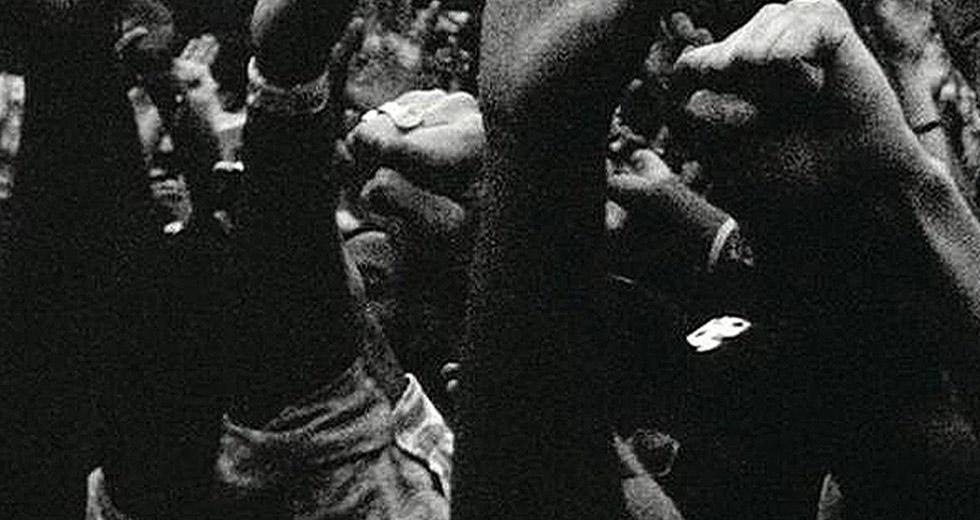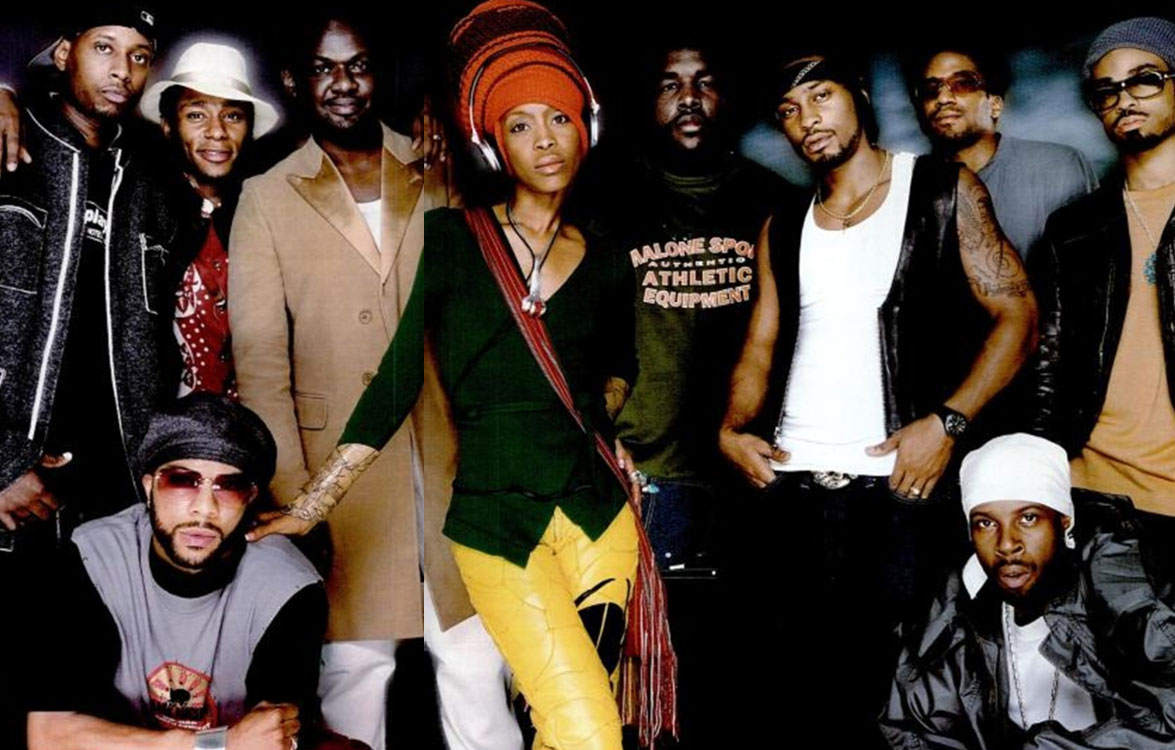Waiting for D’Angelo
In advance of next month’s conversation with D’Angelo as part of Red Bull Music Academy Festival New York, Jayson Greene explores what it means to be a fan of the mercurial R&B star.
We’re still waiting for D’Angelo, despite his best efforts to make us forget him. By making two classics and disappearing in his prime, he booked himself a permanent spot in a special circle of celebrity hell: The genius who allows product shipments to slow, or – God forbid – halt entirely. We grow a little piggy-eyed and demanding when a channel to the numinous closes itself off to us: Get in the studio, Andre. Finish the book, George. It reminds us of how little we actually control, and who likes to be reminded of that?
From the start, the endgame was clear: D’Angelo was either going to personally resurrect Marvin Gaye for us, or we were going to tear him apart.
There is a cruel irony to the sort of spiritual d’etente Michael D’Angelo Archer finds himself in. As an artist, first you are tasked with chiseling away the arms-folded skepticism of the world that doesn’t believe in your right to exist. Once you’ve accomplished that, you are saddled with the unquenchable thirst of fans who have promptly decided they can never live without you again. It’s a frightening bargain, and its terms are bewildering, but the artists who refuse it never quite find peace with the public again. This is part of the D’Angelo story, but only part: His story is further complicated by strains of Child-Prodigy and Great-R&B-Hope syndromes. From the start, the endgame was clear: D’Angelo was either going to personally resurrect Marvin Gaye for us, or we were going to tear him apart.
It’s 2014 and D’Angelo is still alive, and in one piece, though there were close scrapes. In 2005, he sent himself through a windshield after running his Hummer off the highway. The accident followed two well-documented failed rehab stints and was followed by more arrests, culminating in a mug shot, Archer gazing beseechingly out at us. It was so easy, at the time, for journalists and fans to trace a sorrowful line from this pitiful photograph straight back to the Adonis of the “Untitled” video, the camera panning down past acres of heaving muscle, the body as lunar landscape. In that four-and-a-half minute clip, D’Angelo is a planet unto himself, iconic and perfect. Headlines to the stories wrote themselves: What happened?
Few artists have invited, or been burdened with, as many unfair expectations as D’Angelo.
But the story wasn’t that neat, either. He cleaned up and retuned to us, or at least he sort of did: A GQ cover story from 2012 detailed his redemption, his rededication. He returned, fitfully, to the stage. He began talking about his third album. D’Angelo was back! And yet: We still don’t have an album. His story has a habit of swerving like this. Few artists have invited, or been burdened with, as many unfair expectations as D’Angelo. His story is a series of traps, narrowly avoided.
At first, the story was the same one the music industry has been telling itself since the late ’80s: A young man sits down at a piano and quietly schools himself in the wonders of Marvin, Sly, and Stevie while gangsta rap marauds outside his window. His first piano lessons were with a nun. The first song he wrote, after being signed to EMI, was the anti-gang violence homily “U Will Know” for Black Men United. (The song’s earnest, pleading vocal turns by Jodeci, Lenny Kravitz, and others, found its way to the Billboard charts in the same year as 2Pac’s Me Against the World and Mobb Deep’s The Infamous.) Brown Sugar, his debut, was released when he was 21, but the bulk of it was written, played, and produced in Archer’s bedroom when he was a teenager.
The first trap to avoid, then, was terminal wholesomeness. But nothing on Brown Sugar sounds virginal, or hesitant, or studied. The quietly burbling church organ synth on the title track lurks like a dimly lit figure smoking in the doorframe; it embodies the hint of sex, the dark feelings lurking, that gave D’Angelo’s music dirt and texture. dream hampton, in the VIBE cover story surrounding Voodoo’s release, wrote of remembering “my stripper girlfriends from Detroit going on and on about this song that was making them rich weeks before radio broke it.” That organ is there again on “Jonz in My Bonz” and again on “S.D.M.” – disjointed, back-phrased, murmuring low in the mix. It feels separate from the action, a distant memory the track is having.
It helped that the drums knocked. Ali Shaheed Muhammad, of A Tribe Called Quest, is credited with drum programming; along with Raphael Saadiq and Angie Stone, he helped D’Angelo make a neo-soul record that hit hard. The bass on “Jonz in My Bonz,” co-written by Scott, is druggy, clotted, and physical. “Smooth” paired classic guitar comp’ing and jazz trio piano with a beat as muddy as an old Timb boot.
These were the first hints of what would become clearer later: D’Angelo was a subversive cleverly disguised as an R&B conservative. He knew every note and fill of the masters’ records, but he parsed them with a shrewd eye: “I mean, James Brown’s shit was funky up to a point, but his band was still clean,” D’Angelo observed in a one-on-one interview with Questlove for VIBE in 2000. Funky – up to a point. What lay beyond the point of James Brown’s funkiness? He was determined to find out.
The band metabolized 40 years of R&B, one album and Soul Train episode at a time.
But first, D’Angelo would nearly subvert himself out of a follow-up. The period between Brown Sugar and Voodoo marked the first time the words “D’Angelo” and “oblivion” would start to appear next to each other, as five years dragged between albums. D’Angelo retired to Jimi Hendrix’s Electric Lady studios with a tight-knit band led by Questlove, and they metabolized 40 years of R&B, one album and Soul Train episode at a time. They would learn each note, each chord, each lick, and then, once they’d internalized it, they would move on to the next one.
As a working method, this is usually impossible, particularly when you are working on a major label’s dime. But D’Angelo’s ambitions for Voodoo were appropriately impractical: he was aiming for a modern album that established nothing less than a tangible connection to Africa. He called it Voodoo, and he appeared on the cover of the album wearing the eleke, beaded necklaces associated with Cuban Santeria. A sacrificial rooster appears in numerous photos in the album liners. He wasn’t being primitivist or glib; the roots of Vodou dig into the music’s surfaces. In a 2012 academic paper, musicologist Loren Kajikawa found hints of a connection between the 3/2 clave hits that open “Playa Playa” and the duple-triple meter cross-rhythms that opened voodoo ceremonies.
This was funk as unnameable dread, an unsettling force in the order of the universe. As nearly every piece of writing about him acknowledges, D’Angelo was raised Pentecostal, a religion of real demons and tangible dark forces, alive in the world. For him, the stakes were always unbearably high. In the 2000 VIBE interview, Questlove asked him about his complicated feelings on Marvin Gaye. “I feel his spirit,” D’Angelo explained. When The Roots drummer prodded him further, D’Angelo’s defensive glare is audible in his answer: “I just don’t want to make light of this... I don’t want motherfuckers looking at me like I’m some spook.”
When Samuel A. Floyd, Jr., in his landmark 1995 paper “The Power of Black Music,” wrote about the connections between American musical culture and the African Diaspora, he called them “subliminal, inarticulate, and implicit” – all words that function as handy descriptors of Voodoo itself. This is what D’Angelo does, above and beyond all of his staggering musical gifts. He puts us in touch with this memory-rich zone, a place of fingerprints, ghosts. Voodoo is a traversal of this imaginary landscape, a world our minds know better by feel than by sight.
D’Angelo’s voice seems to insinuate itself into the top of the mix and all the way into the bottom at once. He’s whispering from inside your head.
Voodoo is a murmured album, music made from the implications of other music. The boil is so low it barely bubbles into existence. The horns mutter, the bassline leans away from your ear and slips notes into the corners of the walls. Pino Palladino’s bass playing sat back farther behind the beat than even he felt comfortable with. Then there is D’Angelo’s voice, which seems to insinuate itself into the top of the mix and all the way into the bottom at once. He’s whispering from inside your head.
It underwhelmed some people at first. Robert Christgau dismissed it until he saw the live set. Tom Moon of The Philadelphia Inquirer grew slightly impatient with its lack of definition. But what D’Angelo and his band were doing, by clearing out all this space, was allowing for something more exalted and intangible to pour into the cracks. Voodoo isn’t an album, it’s a clearing, one big enough to roam around inside of – which is exactly what D'Angelo acolytes have grown used to doing in the past 14 years.
Plenty has been written about how sampling loops played as big a role in D’Angelo’s consciousness as classic ’70s R&B records. But the sound of the guitars, the flatted chords on “Chicken Grease,” sounding like a smudged record? That is an impossible sound. How does anyone get that dry, clipped sound on the snare on “The Line”? I do not know. I am fairly confident that no one, outside of D’Angelo and the musicians in the room, knows either. It might be the most formally and sonically original document of the neo-soul movement, which is ironic, because it might have sprung from the most studious reverence.
It makes sense on a larger level. Practice something long enough, and tiny shifts occur in the usual mathematical permutations. By the time you arrive at the exhilarating moments of innovation, it’s because your conscious mind has cautiously, gingerly stepped over a gap your unconscious mind has already narrowed to closing. This is the great promise of apprenticeship: Speak someone else’s words long enough, and you will eventually come away with your own. D’Angelo was the last great apprentice in pop music, and Voodoo is his masterwork, a thousand micro-plagiarisms that add up to the most inimitable work of R&B of the past decade plus. Questlove said in a 2013 Red Bull Music Academy lecture that completing the album was “like graduating high school.”
No one’s role in D’Angelo’s story is as poignant as Questlove. He’s been in front of the curtain, promising a reveal on D’Angelo for years. His proclamations about the singer’s imminent return read like a history of folly akin to economists confidently predicting the resurging job market. You feel bad for the guy: In 2013, he told MTV: “All I can say is that significant strides have been made in the last two weeks. Without a doubt, we will have an album in 2013. Without a doubt.” Bless him: He repeated “without a doubt.”
With D’Angelo, everything is in doubt. “Everybody is watching me, from every angle,” he sang on Voodoo’s “The Line,” a song about putting yourself out there, embracing the risks. The exposure ate away at him, so he hid for years, perhaps hoping his observation wasn’t still true. He may release that album in 2014. Or 2015. He hasn’t disappeared again – yet. Nothing is certain, only the knowledge that, no matter how long he waits, we’ll be here, too. Waiting with him.

